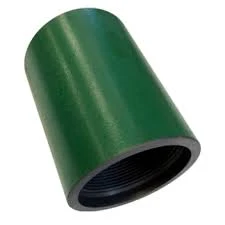- Afrikaans
- Albanian
- Amharic
- Arabic
- Armenian
- Azerbaijani
- Basque
- Belarusian
- Bengali
- Bosnian
- Bulgarian
- Catalan
- Cebuano
- Corsican
- Croatian
- Czech
- Danish
- Dutch
- English
- Esperanto
- Estonian
- Finnish
- French
- Frisian
- Galician
- Georgian
- German
- Greek
- Gujarati
- Haitian Creole
- hausa
- hawaiian
- Hebrew
- Hindi
- Miao
- Hungarian
- Icelandic
- igbo
- Indonesian
- irish
- Italian
- Japanese
- Javanese
- Kannada
- kazakh
- Khmer
- Rwandese
- Korean
- Kurdish
- Kyrgyz
- Lao
- Latin
- Latvian
- Lithuanian
- Luxembourgish
- Macedonian
- Malgashi
- Malay
- Malayalam
- Maltese
- Maori
- Marathi
- Mongolian
- Myanmar
- Nepali
- Norwegian
- Norwegian
- Occitan
- Pashto
- Persian
- Polish
- Portuguese
- Punjabi
- Romanian
- Russian
- Samoan
- Scottish Gaelic
- Serbian
- Sesotho
- Shona
- Sindhi
- Sinhala
- Slovak
- Slovenian
- Somali
- Spanish
- Sundanese
- Swahili
- Swedish
- Tagalog
- Tajik
- Tamil
- Tatar
- Telugu
- Thai
- Turkish
- Turkmen
- Ukrainian
- Urdu
- Uighur
- Uzbek
- Vietnamese
- Welsh
- Bantu
- Yiddish
- Yoruba
- Zulu
Durable Stainless Steel Couplings for Seamless Industrial Applications and Reliable Connections
Stainless Steel Couplings Essential Components for Modern Applications
Stainless steel couplings are critical components in a variety of mechanical and industrial applications. These versatile fittings provide a means to connect two shafts, allowing for efficient power transmission while accommodating misalignment and reducing downtime in systems. The increasing demand for reliable and durable coupling solutions has spurred widespread adoption of stainless steel couplings across multiple industries, including automotive, aerospace, manufacturing, and even robotics.
One of the most significant advantages of stainless steel couplings is their excellent corrosion resistance. Made primarily from iron, chromium, and nickel, stainless steel exhibits a natural ability to withstand harsh environments, including exposure to moisture, chemicals, and extreme temperatures. This makes stainless steel couplings particularly well-suited for applications in petroleum, pharmaceuticals, food processing, and marine environments, where traditional materials may fail long before their intended lifespan.
Another key benefit of stainless steel couplings is their robustness. These couplings not only support high torque loads but also endure vibrations and shock loads that are commonplace in machinery. The toughness of stainless steel allows these couplings to maintain structural integrity even under strenuous conditions, contributing to the overall reliability and longevity of systems in which they are employed.
Stainless steel couplings are available in various types and sizes, catering to different connection requirements and applications. Common types of couplings include rigid couplings, flexible couplings, and universal joints. Rigid couplings are straightforward in design and ideal for applications where precise alignment is critical. Flexible couplings, on the other hand, allow for slight misalignment between shafts, accommodating variations due to thermal expansion or assembly errors. Universal joints are used when shafts need to be aligned at an angle, providing a smooth operation even when the two shafts are not perfectly linear.
stainless steel coupling

In addition to their functional advantages, stainless steel couplings also offer design flexibility. They can be customized to meet specific performance requirements, such as altering the length, diameter, or design to ensure compatibility with different systems. This bespoke approach allows engineers to optimize their designs for efficiency and performance, further enhancing the overall effectiveness of their machinery.
The manufacturing process of stainless steel couplings typically involves precision machining techniques, ensuring that each component meets stringent quality standards. High-grade stainless steel is often selected for its superior mechanical properties, and advanced techniques such as forging, casting, or machining are employed to create couplings that are not only functional but also aesthetically pleasing.
As industries continue to evolve and focus on improving efficiency and sustainability, the demand for high-quality stainless steel couplings is likely to grow. With advancements in manufacturing technology and materials science, these couplings will become even more capable, enabling industries to push the boundaries of what is possible in mechanized systems.
In conclusion, stainless steel couplings are vital components that play a pivotal role in ensuring the smooth operation of various machinery and apparatus. Their corrosion resistance, durability, and versatility make them ideal for a wide range of applications. As the reliance on efficient and durable mechanical systems grows, investment in quality stainless steel couplings will undoubtedly continue to yield significant returns in performance, reliability, and maintenance savings. Industries that prioritize the adoption of these components will find themselves better equipped to meet the challenges of an ever-changing technological landscape.
-
Tubing Pup Joints: Essential Components for Oil and Gas OperationsNewsJul.10,2025
-
Pup Joints: Essential Components for Reliable Drilling OperationsNewsJul.10,2025
-
Pipe Couplings: Connecting Your World EfficientlyNewsJul.10,2025
-
Mastering Oilfield Operations with Quality Tubing and CasingNewsJul.10,2025
-
High-Quality Casing Couplings for Every NeedNewsJul.10,2025
-
Boost Your Drilling Efficiency with Premium Crossover Tools & Seating NipplesNewsJul.10,2025







